Isola di San Clemente
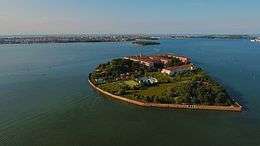 | |
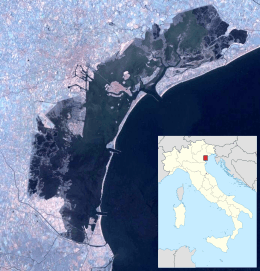 Isola di San Clemente | |
| Geography | |
|---|---|
| Coordinates | 45°24′40″N 12°20′08″E / 45.411097°N 12.335585°ECoordinates: 45°24′40″N 12°20′08″E / 45.411097°N 12.335585°E |
| Adjacent bodies of water | Venetian Lagoon |
| Area | 62,000 m2 (670,000 sq ft)[1] |
| Length | 380 m (1,250 ft) |
| Width | 230 m (750 ft) |
| Highest elevation | 4 m (13 ft) |
| Administration | |
| Region | Veneto |
| Province | Province of Venice |
Isola di San Clemente (San Clemente Island) is a small island in the Venetian Lagoon in Italy. For centuries it housed a monastic settlement, and more recently a hospital. It is now the site of a luxury hotel.
Location
San Clemente Island lies in the Venetian Lagoon between Giudecca and the Lido. The island covers 6 hectares (15 acres), of which 1.34 is edified.
History
The island was first settled in 1131, when Venetian merchant Pietro Gattilesso funded the construction of the church of San Clemente[2] and a hospice for pilgrims and soldiers destined for the Holy Land. The name is dedicated to Pope Clement I, who died as a martyr according to legend and who is patron of seamen. The complex was run by Augustine canons, while the entire island was under the jurisdiction of the patriarch of Grado Enrico Dandolo. In 1288 the relics of Saint Anianus - the first successors of St. Mark as Patriarch of Alexandria - were brought to the San Clemente church.
After experiencing a slow decline in the course of the XIV century, San Clemente gained fresh life in 1432, when Pope Eugene IV moved the order of Lateran canons - also known as the Charity (Carità) - to the island. Thanks to donations provided by wealthy Venetian families, the canons began work on the restoration of the church and enlargement of the monastery.
In 1643, to fulfil a vow made during the plague epidemic that struck the city in 1630, Venetians funded the building of a new chapel, modelled on the Holy House of Loreto, inside the San Clemente church. This “church in a church” is still a main feature of the construction.
Camaldolese Hermits of Monte Corona purchased the island in 1645. The Venetian nobility provided them with financial assistance to restore the church and monastery, and expand the island to add additional houses to the complex. In 1652 the Morosini family sponsored the restoration of the church façade by Andrea Cominelli, in order to pay tribute to the family’s members Francesco and Tommaso, who died in the War of Candia.
The fall of the Republic of Venice in 1797 impacted San Clemente. Also, owing to the suppression of religious orders by Napoleon, in 1810 the Camaldolese monks left the island, which became a military garrison.
Since 1873 the island had housed a mental hospital, closed in 1992.
Gateway to Venice
Between the XV and XVI centuries, San Clemente became known as the “gateway to Venice”. It became standard practice to take the Bucentaur (Bucintoro), the Doge’s ceremonial barge, to the island to meet distinguished visitors. On the return journey to the Grand Canal, the guests were entertained by a variety of spectacles and performances.
Writing of Venice in 1493, Marino Sanudo described the Bucentaur as “a marvel, in which the Prince and Senate go to any great lord visiting the city; they go to San Clemente or elsewhere, depending on the direction from which the visitor is coming”.[3]
Hotel
The buildings on the private island were renovated in 2003 and converted into a luxury hotel.[4] In September 2013 it was announced that a subsidiary of the Permak construction group of Turkey had bought the property.[5] Permak launched further renovations between 2013 and 2014, while retaining the historic character. The property is currently managed by Kempinski Group, which reopened the hotel as San Clemente Palace Kempinski[6] in March 2016.[7] The hotel has 190 rooms and suites, three restaurants and three bars, an outdoor swimming pool and a tennis court as well as a golf pitching course.
Gallery
-
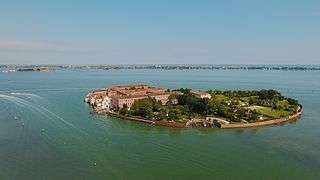
San Clemente Island, Venice
-
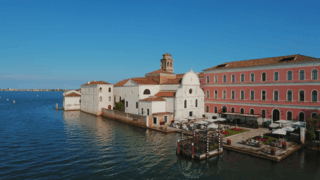
San Clemente Island, Venice
-
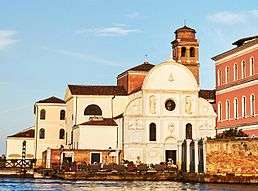
San Clemente Church, Venice
-
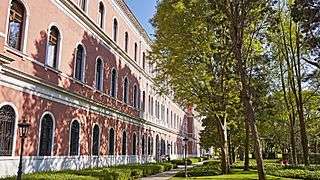
San Clemente Island, Venice - Hotel
-
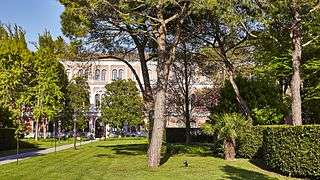
San Clemente Island, Venice
-
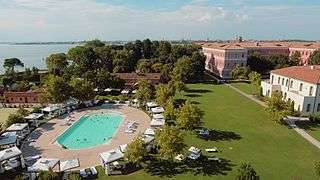
San Clemente Island, Venice
-
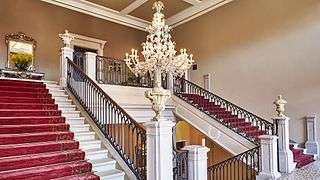
San Clemente Island, Venice - hotel's main starcase
-

San Clemente Island, Venice - hotel's hallway
References
- ↑ E ufficiale... 2013.
- ↑ Madden, Thomas F. (2008-04-01). Enrico Dandolo and the Rise of Venice. JHU Press. ISBN 9780801891847.
- ↑ Chambers, David Sanderson; Fletcher, Jennifer; Pullan, Brian; America, Renaissance Society of (2001-01-01). Venice: A Documentary History, 1450-1630. University of Toronto Press. ISBN 9780802084248.
- ↑ "San Clemente Palace, la tana di chi ama il lusso - il mattino di Padova". Retrieved 2016-08-12.
- ↑ "TOURISM - Turkish firm buys island, hotel in Venice". Retrieved 2016-08-12.
- ↑ "Luxury 5 Star Hotel In Venice | San Clemente Palace Kempinski". www.kempinski.com. Retrieved 2016-08-12.
- ↑ "Your New Private Island Resort: San Clemente Palace Kempinski Venice - Pursuitist". Pursuitist. 2016-04-13. Retrieved 2016-08-12.
Sources
- Giovanna Cecconello, Carlo Giuliani, Michele Sgobba, San Clemente: progetto per un'isola, CLUVA, 1980
- Martina Carraro, L'isola di San Clemente a Venezia. Storia, restauro e nuove funzioni, Carsa, 2003
- V. M. Coronelli, Isolario dell’Atlante Veneto, Venezia, 1696-1698